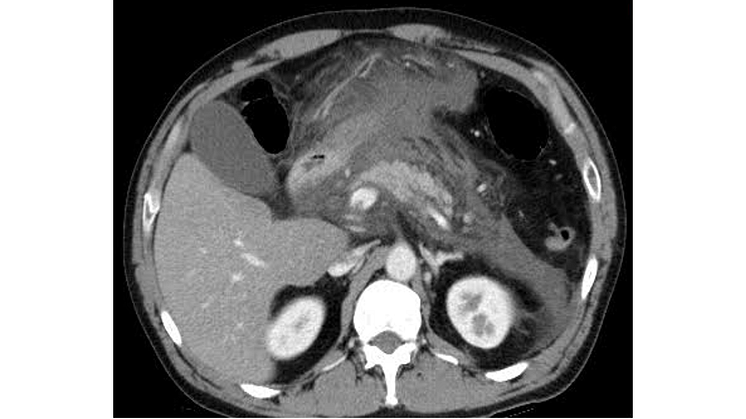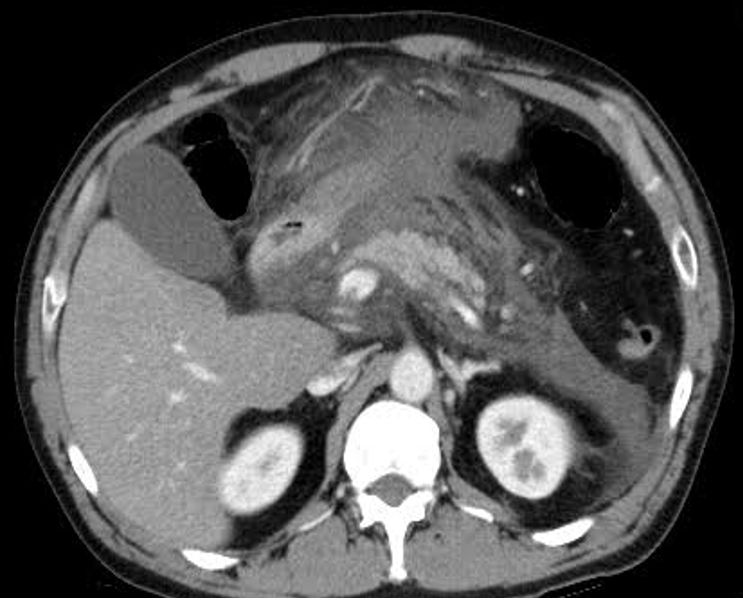
Press release -
Study Reveals Novel Therapeutic Target for Severe Acute Pancreatitis Caused by Fungi -- Kindai University
Osaka [18 October 2023] Study Reveals Novel Therapeutic Target for Severe Acute Pancreatitis Caused by Fungi
Japanese researchers show that the fungus-induced activation of a key protein leads to severe acute pancreatitis
Severe acute pancreatitis (SAP) is a serious medical condition that causes significant mortality. Although previous studies have shown that the translocation of gut fungi into the pancreas can trigger SAP, the precise mechanism by which gut fungi induce SAP has remained unknown. A recent study conducted by Japanese researchers identifies the protein "LRRK2" as the trigger for SAP induced by gut fungi.
The trespassing of gut bacteria and fungi into the pancreas leads to the onset of severe acute pancreatitis (SAP) -- a serious medical condition that leads to the death of pancreatic tissue and potentially multiple organ failure. While the mechanism underlying gut bacteria-triggered SAP has been comprehensively investigated, the precise mechanism by which gut fungi trigger SAP has thus far remained unknown. A recent paper published by Japanese researchers in Clinical and Experimental Immunology sheds light on this mechanism.
Impaired function of the intestinal barrier allows both gut bacteria and gut fungi to enter the pancreas. This suggests that innate immune responses against fungi might also contribute to pancreatitis development. Leucine-rich repeat kinase 2 (LRRK2) is a multifunctional protein that has previously been associated with various inflammatory disorders, including Parkinson’s disease, Crohn’s disease, tuberculosis, and leprosy. Taking cue from these findings, the research team decided to examine the role of LRRK2 activation in SAP -- a serious and sometimes fatal inflammatory disorder.
“LRKK2 is a multifunctional protein that regulates innate immunity against fungi via Dectin-1 activation. Here, we investigated the role of LRRK2 in SAP development and observed that inhibition and activation of LRRK2 attenuated and promoted SAP development, respectively” explains Associate Professor Tomohiro Watanabe from the Department of Gastroenterology and Hepatology, Kindai University Faculty of Medicine, Japan, who led the study. The research team also included Assistant Professor Yasuo Otsuka from the same university.
During the study, the team noticed that induction of acute pancreatitis in Lrrk2 transgenic mice resulted in the development of SAP through an acute increase in proinflammatory proteins called cytokines. Remarkably, mice with artificially induced SAP showed an attenuated degree of SAP when treated with an LRRK2 inhibitor. Furthermore, the researchers noted that the pancreatic levels of proinflammatory cytokines were significantly lower in mice treated with the LRRK2 inhibitor than in the solvent-treated control group. They, therefore, concluded that the activation of LRRK2 triggers SAP via the release of inflammation-causing cytokines, thus unleashing the underlying mechanism.
Next, the researchers decided to explore whether translocation of gut fungi and/or gut bacteria during SAP induction is associated with severe pancreatic injury. The depletion of gut fungi inhibited the development of SAP in the Lrrk2 transgenic mice whereas depletion of gut bacteria did not pause SAP induction. Thus, removal of the fungal mycobiome using anti-fungal agents significantly reduced the severity of SAP in Lrrk2 transgenic mice, indicating a role for fungal components. Further experiments corroborated the obtained data. Pancreatic myeloid cells of Lrrk2 transgenic mice produced large amounts of proinflammatory cytokines as compared with those from Lrrk2-intact mice upon exposure to fungal zymosan—a molecule found on the cell wall of fungi. Moreover, as expected, inhibition of Dectin-1, a sensor for fungal cell wall components, did not cause SAP in the mouse model, supporting the role of fungal components in the disease.
“We now have the possibility of treating patients with SAP with drugs that target the immune responses caused by the fungi–LRRK2 axis. This provides a direction for future clinical investigations,” concludes Prof. Watanabe.
Reference
Title of original paper: Leucine-rich repeat kinase 2 promotes the development of experimental severe acute pancreatitis
Journal: Clinical and Experimental Immunology
DOI:10.1093/cei/uxad106
URL: https://doi.org/10.1093/cei/uxad106

Image Title: Computed tomography in a patient with severe acute pancreatitis
Image Caption: A new study in mice shows that the fungi-induced activation of the LRRK2 protein leads to the development of severe acute pancreatitis.
Image Credit: Tomohiro Watanabe from Kindai University
Image Source Link to be added in the Image Credit Section of EA form: NA
License type: Original content
About Kindai University
Kindai University was established in 1949 after the merger of Osaka Technical College (founded in 1925) and Osaka Science and Engineering University (founded in 1943). Over the past several decades, the university has transformed into a comprehensive educational organization with an ever-growing reputation. Kindai University has over 2,200 full-time faculty members, 6 campuses, and 18 research centers. As an academic institution offering a broad range of programs from across disciplines, Kindai University strives to impart practical education while nurturing intellectual and emotional capabilities. The university’s academic programs are fully accredited by Japan’s Ministry of Education, Culture, Sports, Science and Technology as well as by the National Institution for Academic Degrees and University Evaluation.
Website: https://www.kindai.ac.jp/english/
About Dr. Tomohiro Watanabe from Kindai University
Dr. Tomohiro Watanabe is an Associate Professor at Kindai University Faculty of Medicine. He primarily conducts research in the area of gastroenterology, immunology, allergies, connective tissue disease, bacteriology, and molecular biology. Dr. Watanabe has more than 200 publications to his credit including some published in prominent journals like Immunity, Journal of Clinical Investigation, and Nature Immunology. In addition, he has authored several books, won distinguished research awards, secured multiple research grants, and obtained a US/WIPO patent on the uses of muramyl dipeptide for treating inflammation.
Funding information
This work was supported by Grants-in-Aid for Scientific Research (19K08455, 20K16975, 21K159857, 22K07996) from the Japan Society for the Promotion of Science, Takeda Science Foundation, Smoking Research Foundation, Yakult Bio-Science Foundation, SENSHIN Medical Research Foundation, and a 2022 Kindai University Research Enhancement Grant (KD2208).

